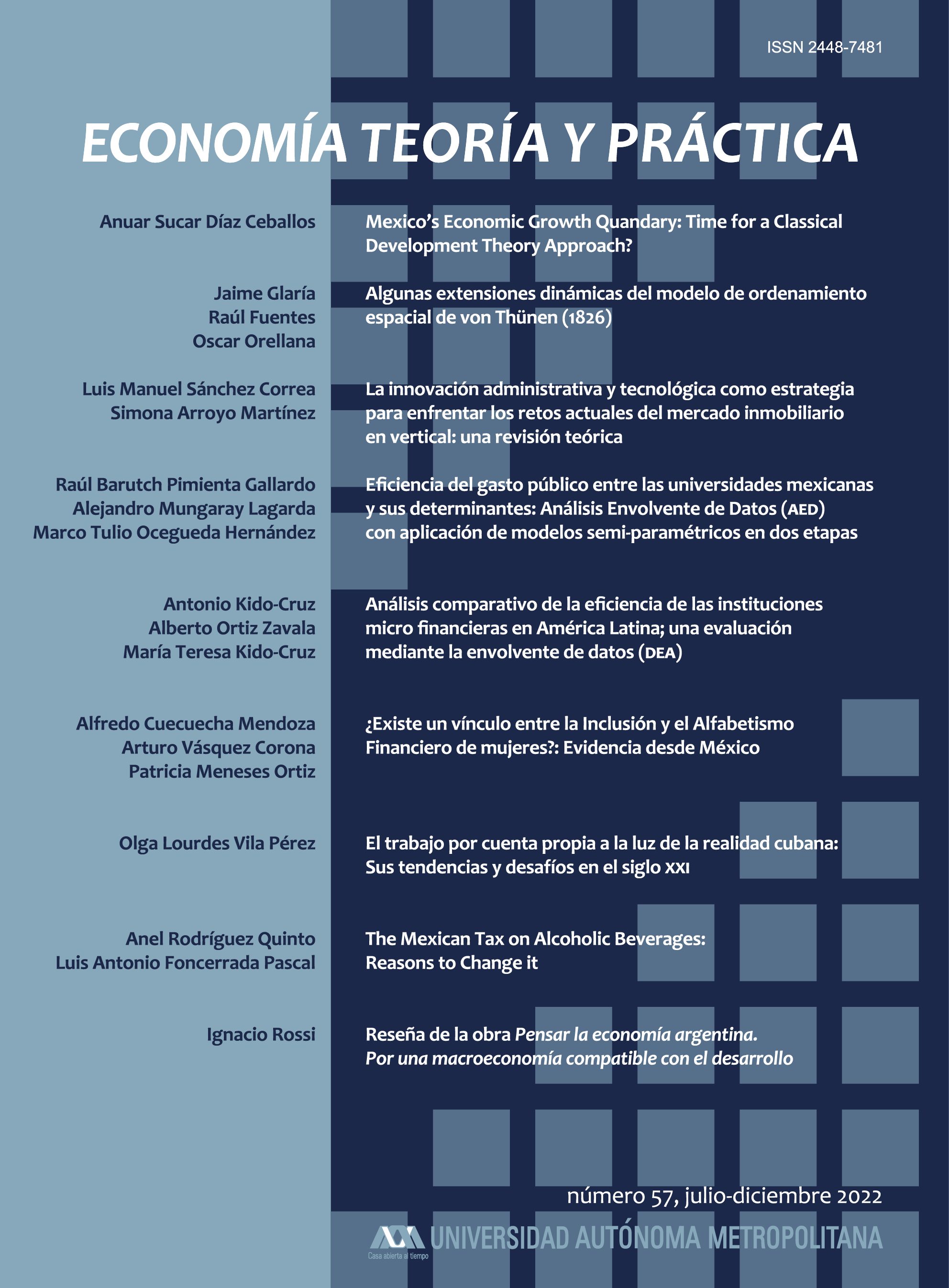Some Dynamic Extensions of von Thünen’s Spatial Arrangement Model (1826)
Copyright (c) 2022 Economía teoría y práctica

This work is licensed under a Creative Commons Attribution-ShareAlike 4.0 International License.
Abstract
This paper introduces a dynamic evolution with an abrupt fall of transportation cost to the steady and monotonic von Thünen model (1826). Exploring different scenarios by means of numerical simulations, it reveals a lack of robustness of such model in the long run, which is expressed by the emergence of negative profitability for some production centers located far from the consumption centers. Simulations, which assume either one consumption center or two, predict the coexistence of winners and losers when localization is driven by Adam Smith’s invisible hand (without regulation). Moreover, they show that the transition stage toward the steady state is not monotonic, which opens up opportunities for the exploration of that stage and its relation to the complexities of spatial development of economies.
References
- Edwin S. Mills (2000). A Thematic History of Urban Economic Analysis, Brookings-Wharton Papers on Urban Economics, 2000, p. 1-52
- Masahisa Fujita, Paul S. Krugman y Anthony J. Venables (1999). The Spatial Economy: Cities, Regions and International Trade, MIT, Cambridge
- Richard H. Day and E. Herbert Tinney (1969). A dynamic von Thünen. Geographical Analysis, Volume 1, Issue 2, páginas 137-151.
- Alonso, W. (1964). Location and Land Use. Cambridge: Harvard Universwity Press.
- Okabe, A. and Yoshiaki Kume (1983). A Dynamic von Thünen Model with a Demand Function. Journal of Urban Economics 14, páginas 355-369.
- von Thünen, J.H. (1826). Der Isolierte Staat in Beziehung auf Landschaft und Nationalokonomie. Hambur (English translation by C.M. Wartenberg, von Thünen’s Isolate State, Oxford: Pergamon Press, 1966)

